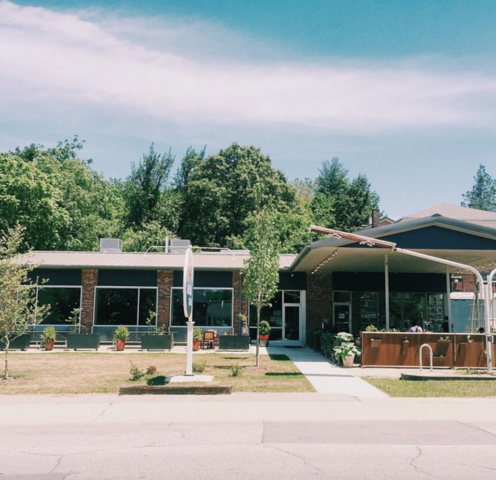Old gas station, or new urban place?
Gas stations are slowly becoming a thing of the past, but properties with abandoned stations can become vibrant community spaces. Transforming gas stations can add density, encourage foot traffic, and bring economic activity to neighborhoods.
According to the US Census Bureau, the number of stations declined by more than 12,000 over the last 15 years. Often on prominent street corners so they’re visible from multiple angles, and many times connected to more than just one street, gas stations are properties that hold a lot of value for developers and businesses.
The reuse of old stations started to grow in 2002, when Congress authorized the EPA to use its brownfield funding for cleanup of properties with low risk underground storage tanks (for fuel).
Here are some great repurposed gas stations
In Adams Morgan, Richmond, Asheville, and Jacksonville, former gas stations are now restaurants, coffee shops, or mixed-use developments.
In Adams Morgan, an Exxon gas station was demolished and will soon be home to The Adamo, a four-story building with residential and commercial uses. Prior to construction, gasoline, diesel, and heating oil tanks had to be removed.
In Jacksonville, FL, a prominent corner in the Avondale neighborhood went from Shell gas station to a new-concept Mellow Mushroom. The restaurant fronts the street, abutting the sidewalk and making the place more pedestrian-friendly (as opposed to a gas station placed several feet from the road).

The Mellow Mushroom in Jacksonville’s Avondale Neighborhood. The building is on a lot that was formerly a Shell gas station. Photo by amateurphotographybymichel.
In Richmond, Lamplighter Coffee’s Addison Street location is a repurposed gas station. The station’s former canopy now protects patrons on the patio.
Asheville’s Gan Shan Station even incorporates its former use into the restaurant’s name. The East Asian-inspired eatery’s conversion from a Gulf gas station can be viewed on its website.
Each of these projects turned eyesores into places that encourage people to visit via all forms of transportation.
There are environmental concerns
Even though they hold great potential, properties that used to house gas stations can be environmentally hazardous. Former gas stations are often classified as petroleum brownfields-land contaminated with petroleum because of underground storage tanks. The effects of these tanks vary, from minimal contamination and simple removal to costly clean-ups, but either way, converting the land is not a seamless process.
Also, the cost associated with the removing the tanks can harm redevelopment efforts, and the permitting process can lengthen the project’s timeline and create uncertainty. The EPA’s Brownfields program has an extensive list of resources on funding and best practices.
In our region, former gas stations offer opportunities to increase the available housing stock, aesthetically improve a neighborhood, and add economic activity without significant additional investment in transportation and infrastructure improvements.



